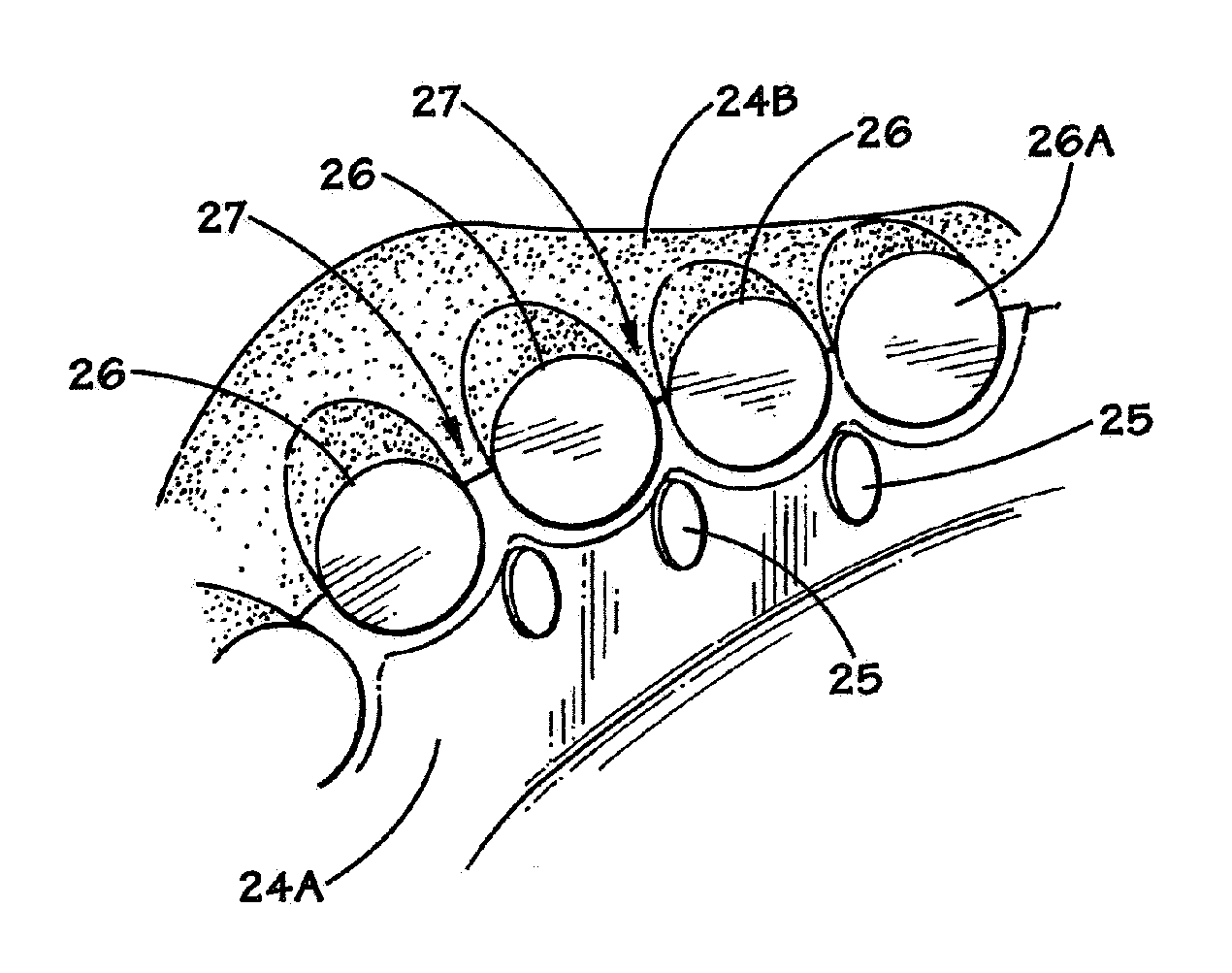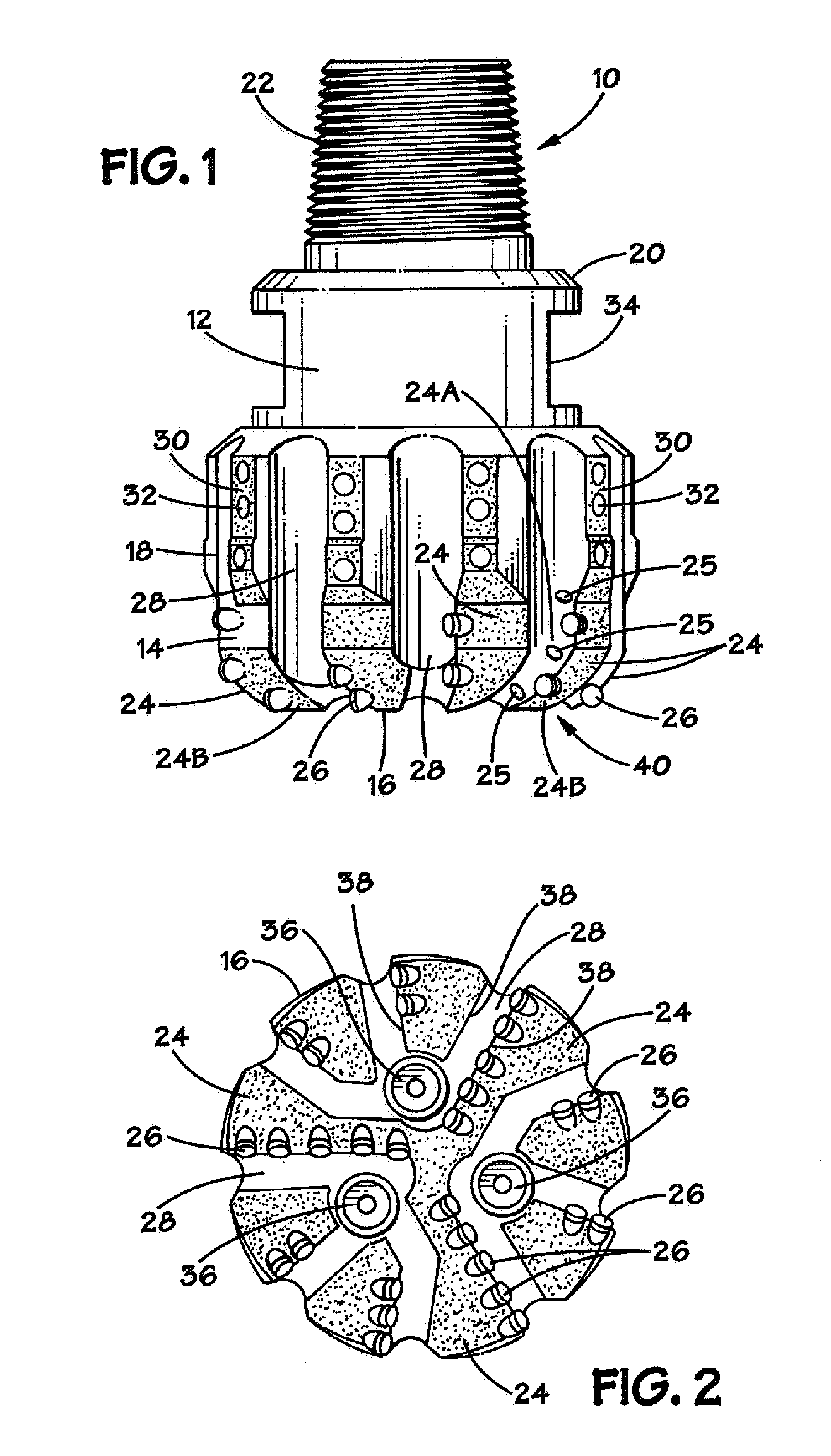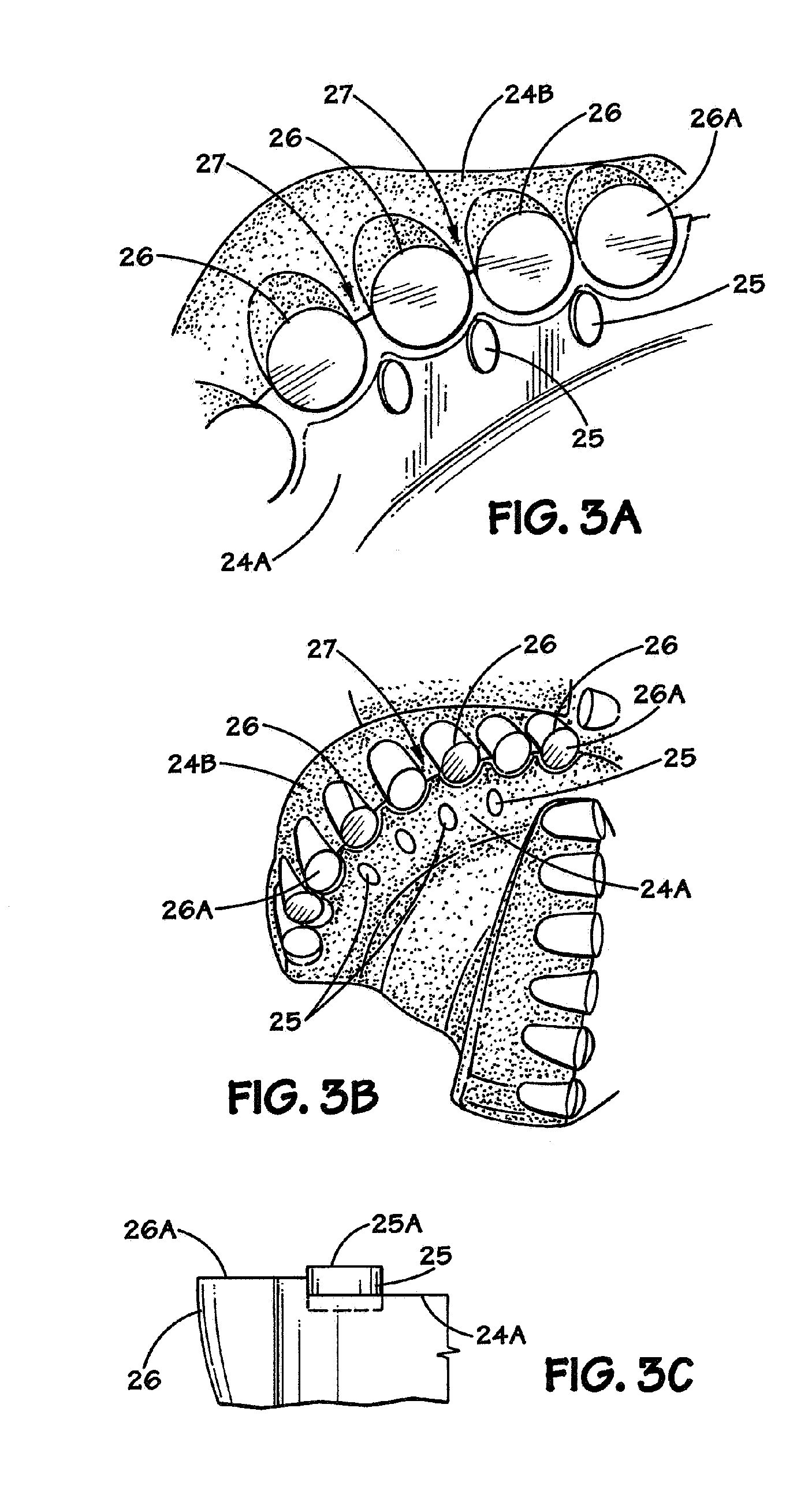As a general rule, drill bits that are able to drill rapidly through soft formations cannot penetrate the harder formations and, similarly, drill bits that are able to drill through harder formations are not aggressive enough to economically drill through softer formations.
Thus, when drilling deep wells through many different types of rock and soil, drill bits may have to be changed many times in response to wear or in response to changing soil conditions.
However, it is also apparent from examination of used drill bits that the superhard cutting elements do degrade.
The degradation of the superhard cutting elements may be caused, at least in part, by the high temperatures generated at the cutting face from the friction of scraping rock.
Unfortunately, directing the flow of drilling fluid in this manner can cause severe erosion of the surfaces adjacent to the cutting elements.
Thus, although directing the drilling fluid at the
diamond cutting elements on PDC bits would provide better cooling and longer life, commercial drill bits typically do not generally incorporate this feature because of erosion.
As a consequence, typical PDC drill bits may not perform well where very high cutting element face friction is present, such as in hard rock drilling.
In addition, where soft, sticky formations are encountered, such as shales with high clay content, the
hydraulic action of conventional PDC drill bits is sometimes inadequate to clean the cuttings away from the bit body and the cutting elements resulting in a phenomenon known as bit balling.
Unfortunately, welded hardmetal can crack as the blades of the PDC drill bit bend in response to the drilling loads.
Once a crack starts, the impinging drilling fluid quickly erodes the exposed, soft underlying steel.
Applying welded hardmetal is typically a hand-applied process and it is difficult to apply to the sides and bottom of the channels on the cutting face of PDC bits.
Once the welded hardmetal is applied, it is generally so thick and uneven that it affects the hydraulic flow of the flushing fluids.
The swirls and flow eddies in the wake of these thick, rough
layers can make the erosion problem even worse.
Finally, the temperature caused by the
welding process not only affects the heat treatment of the steel PDC bit bodies, as it can also cause the bodies to warp and even crack due to the thermal stresses.
The temperature due to
welding may also have a deleterious effect on the diamonds themselves if the DDC cutting elements are brazed prior to performing the
welding process.
Unfortunately, the problem with this and all other
flame spray type
coating processes is that the sprayed particle
stream must impinge nearly perpendicular to the surface to be coated to make the
coating adhere to the cutting face of the bit body.
Although sprayed coatings can provide good erosion protection on some areas of the drill bit, the
coating does not adhere well to the blade surfaces that are approximately parallel to the cutting face.
Since these channels usually have vertical walls, spray type coatings do not provide adequate
erosion resistance in these areas of the drill bit.
These limitations greatly reduce the effectiveness of the
flame spray processes for producing wear and erosion resistant coatings on PDC bits.
Unfortunately, infiltrated or matrix bits are expensive to manufacture.
Each bit must be cast in a mold in a very labor intensive process.
Infiltrated or matrix bit bodies are also weak in bending, so the blade height achievable with an infiltrated product is limited by the intrinsic strength of the material in bending.
As a result, matrix drill bits do not provide the very high (and desirable) rates of penetration of PDC bits.
Finally, because the matrix drill bit products use a relatively soft
copper based infiltrate to bind the
tungsten carbide together, the infiltrated drill bit product can also be subject to erosion as the fluid
stream attacks the
copper binder, weakening the matrix and allowing
tungsten carbide to be loosened from the body.
The matrix design provides some erosion improvement over steel, but is still subject to all the limitations described above.
Although PDC type drill bits are shown and described in these patents, it is impractical to clad the vertical surfaces as shown.
This is because the movement of the pressure transfer media tends to scrape the powders from the vertical steel surface as the press closes.
Also, because the steel body itself is incompressible, the pressure transfer media will not be able to move in a manner which allows for an even pressure distribution.
The end product of the above described cladding process has many of the same deficiencies as the
flame spray coatings previously described, in that the vertical surfaces will not have adequate erosion protection.
 Login to View More
Login to View More 


